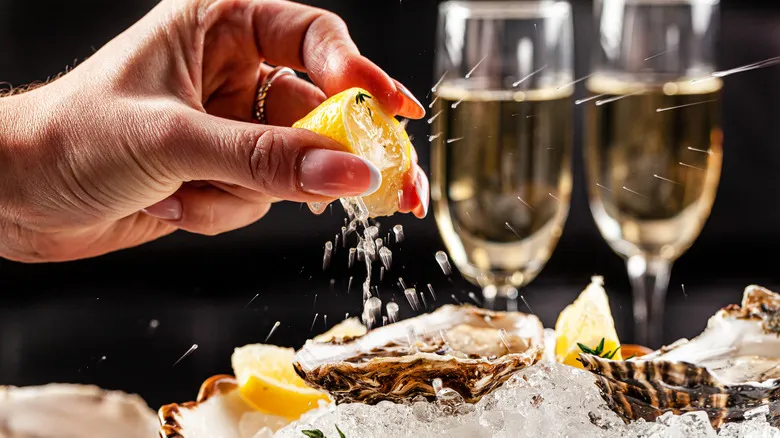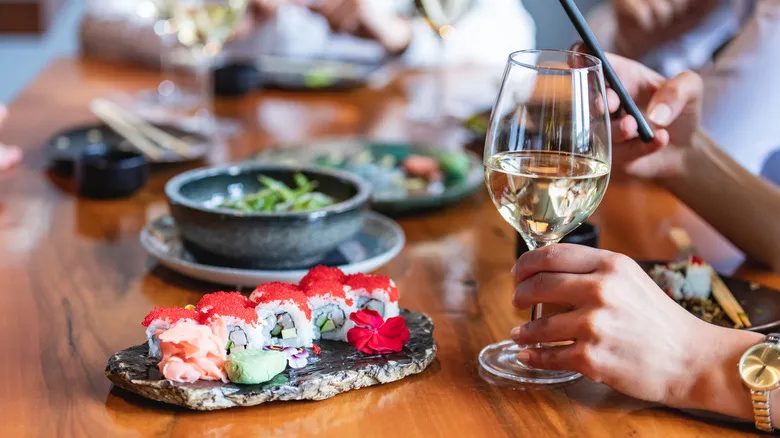Avoid heavy tannins, alcohol, and sweetness

When pairing raw fish with wine, it's essential to steer clear of three key elements: heavy tannins, high alcohol content, and excessive sugar. Tannins, which are natural compounds found in wine primarily from grape skins, can leave a dry sensation on the tongue after a sip. The level of tannins in red wines varies by varietal, ranging from low to high. Salt in food can soften tannins, which is why a heavily seasoned steak pairs well with a cabernet sauvignon. However, with raw seafood, which is typically lightly seasoned to maintain its natural flavor, heavy tannins can overwhelm the palate.
Alcohol contributes to a wine's body, and wines with a higher alcohol by volume (ABV) — generally over 13% — tend to have a fuller body that doesn't complement the subtlety of raw fish. Similarly, wines with significant residual sugar can introduce unwanted sweetness and weight, which may clash with the crispness of delicate seafood. The key to a successful pairing is to align the body and flavor of the wine with that of the food; in most cases, lighter dishes call for lighter wines.
Go for acidity and lightness

What would you pair with raw fish? Lemon, of course! Think of wine as a similar enhancement. Light-bodied white wines such as Sauvignon Blanc, Albariño, and Grüner Veltliner offer high acidity and citrus notes that refresh the palate when enjoyed with raw seafood.
Champagne and other sparkling wines, including dry rosés, are also fantastic options for dishes like snapper crudo and raw oysters. The bubbles help cleanse the palate between bites, while the acidity balances the richness of certain fish. And don’t overlook sake! This rice wine is a traditional complement to Japanese cuisine and pairs beautifully with raw fish. Look for junmai or ginjo varieties, which typically offer greater complexity and flavor.
If you prefer red wine, choose light-bodied, unoaked reds like Pinot Noir or Gamay, especially with dishes that include sauces or additional ingredients. These wines are less likely to overshadow the delicate flavors of the fish.
So, the next time you indulge in a beautiful plate of sashimi, let the fish lead the way. Choose a wine that enhances its natural flavors and allows the fish to shine. It’s a subtle pairing that’s truly worth enjoying.
Recommended

What It Means When A Wine Bottle Is Labeled 'Reserve'

How Long Beer Lasts In Cans Vs Bottles

What Is A Wine Decanter And Who Actually Needs One?

12 US Cities Every Beer Lover Should Visit
Next up





